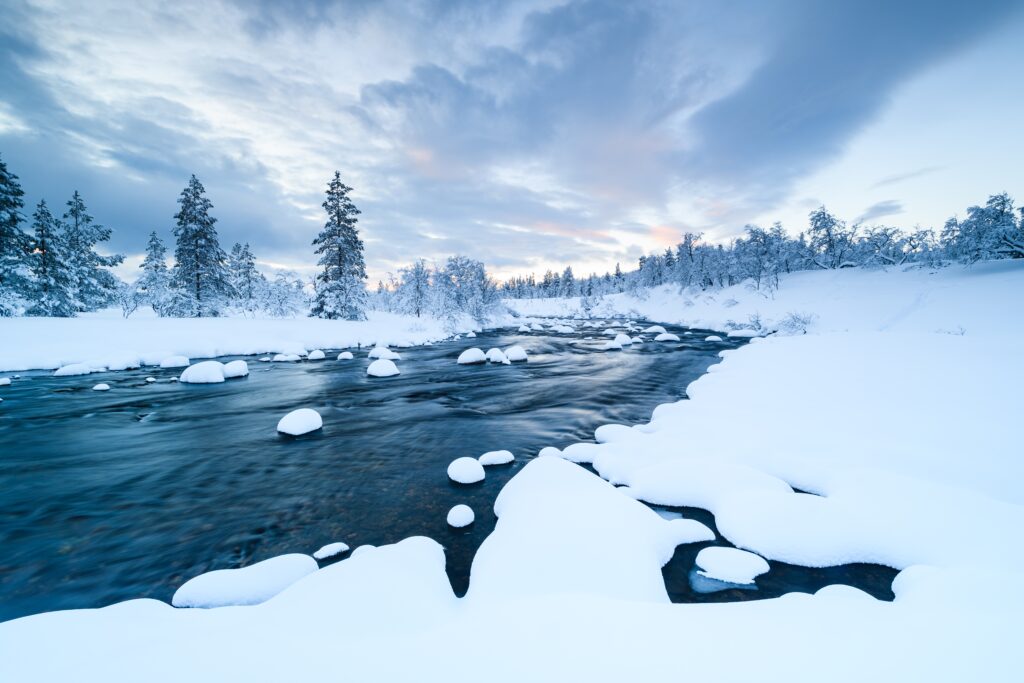A frozen river is a captivating natural phenomenon that occurs when the surface of a river solidifies due to freezing temperatures. This transformation creates a unique landscape, offering both challenges and opportunities for those who encounter it.
What Is a Frozen River?
A frozen river forms when the air temperature drops low enough to cause the river’s surface water to freeze. This typically happens during winter months in colder climates. The thickness and stability of the ice can vary based on factors like water flow speed, air temperature, and the river’s depth. In some regions, frozen rivers become pathways for transportation, recreation, and even ice fishing.Collins Dictionary+1The Great Outdoors Stack Exchange+1
Benefits of a Frozen River
1. Natural Beauty
Frozen rivers often create stunning winter landscapes, with ice formations and snow-covered surfaces enhancing the scenery. These vistas can be perfect for photography, painting, or simply appreciating nature’s artistry.
2. Recreational Activities
In areas where the ice is thick and stable, activities like ice skating, ice fishing, and even ice boating become possible. These activities provide unique ways to enjoy the outdoors during the colder months.Condé Nast Traveler+1Merriam-Webster+1
3. Wildlife Observation
Frozen rivers can attract various wildlife, such as ducks and other birds, that adapt to the icy conditions. Observing these animals can offer insights into their behaviors and survival strategies during winter.
Best Practices for Safety on Frozen Rivers
1. Assess Ice Thickness
Before venturing onto a frozen river, ensure the ice is thick enough to support your weight. Generally, ice should be at least 4 inches thick for walking and 5–7 inches for snowmobiles.The Great Outdoors Stack Exchange
2. Check Local Conditions
Consult local authorities or experienced individuals about current ice conditions. They can provide information on areas to avoid and recent changes in ice stability.
3. Use Safety Gear
Wear appropriate clothing to stay warm and dry. Carrying safety equipment like a whistle, rope, and ice picks can be crucial in emergencies.
4. Never Go Alone
Always travel with a companion when on or near frozen rivers. Having someone with you increases safety and provides assistance if needed.
Actionable Insights
- Plan Ahead: Check weather forecasts and local ice conditions before heading out.
- Stay Informed: Keep up-to-date with any advisories or warnings related to ice safety.
- Respect Nature: Avoid disturbing wildlife and leave no trace of your activities on the ice.
- Educate Others: Share safety tips with friends and family to promote awareness and prevent accidents.
Frequently Asked Questions (FAQ)
Q1: How can I determine if the ice on a river is safe to walk on?
A1: Ensure the ice is at least 4 inches thick for walking. Avoid areas with cracks, slush, or areas near moving water.
Q2: What should I do if I fall through the ice?
A2: Try to remain calm, keep your head above water, and kick your legs to help propel yourself out. Once out, roll away from the hole to distribute your weight.
Q3: Are there any rivers known for being popular during winter?
A3: Yes, rivers like the Songhua River in China and the Kennebec River in Maine are known for their winter activities and scenic frozen landscapes.KEEPITKASSUAL+1Marmalade and Mustardseed+1
Q4: Can wildlife be observed on frozen rivers?
A4: Yes, animals like mallard ducks and other birds often inhabit frozen rivers, adapting to the icy conditions.
Q5: Is it safe to drive on frozen rivers?
A5: Driving on frozen rivers is generally not recommended due to unpredictable ice conditions. Always consult local guidelines and authorities before considering such activities.

